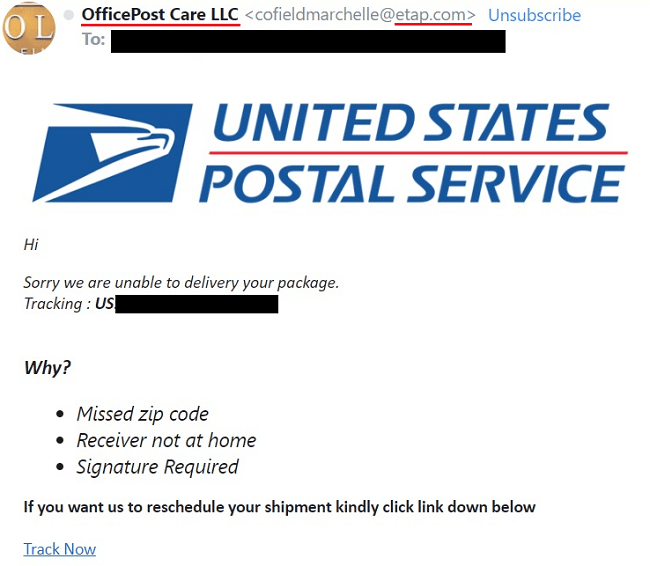What is “SKY LOTTO” Email Spam
Subject: CONGRATULATIONS YOU HAVE WON
SKY LOTTO.REF NO: 22-13-78-NLSKLBATCH NO: 2-02-05-SKLBONUS NOS:02.450.28.21.3
Dear Internet User.
We are happy to inform you that you have Won $800,000( Eight Hundred Thousand Us Dollars Only ) for the month of May 2024 Lottery Win promotion which was organized by ONLINE LOTTERY every year and sponsored /promoted by SKY LOTTO.
ONLINE LOTTERY, collects all the e mail addresses of they people online and among the millions that logon to the internet, We only selected Twenty Five people every year as our winners through electronic balloting System without the winner applying, we are congratulating you for having been one of the people selected.
We ask that you keep your winning information confidential until your money (800,000)Eight Hundred Thousand Us Dollars Only)has been fully remitted to you by our accredited pay-point bank.
This measure must be adhere to avoid loss of your cash prize, winners of our cash prizes are advised to adhere to these instructions to forestall the abuse of this program by other participants.
PAYMENT OF PRIZE AND CLAIM INSTRUCTION BELOW,
You are to contact your Claims Agent on or before your date of Claim, Winners Shall be paid in accordance with his/her Settlement Center.
ONLINE LOTTERY Prize must be claimed no later than 20 days from date of Draw Notification date in which Prize has won. Any prize not claimed within this period will be forfeited.
These are your identificationREF NO: 22-13-78-NLSKLBATCH NO: 2-02-05-SKLBONUS NOS:02.450.28.21.3SAL NO:2004-02-NLSKLTICKET NO:002-083-2-NLSKL
These numbers are your winning identification numbers, that you will send to your claims agent e mail below,
Claim Agent Details Below:
Mr. Norman Ko
EMAIL: office_dept@minister.com
EMAIL: office_dept@minister.com
For identification and further instructions.
You are therefore advise to also send the following information to the Claims Agent above e mail to facilitate and process the transfer of your fund.
1.Full Name: 2.Contact Address: 3.Direct Telephone Numbers: 4.Occupation: 5.Date of Birth: 6.Nationality: 7. Age
Congratulations!! Once more.
Yours in service,Mrs. Victoria Compton
mrsjanetlouiseyellen3@gmail.com
SKY LOTTO email spam is a type of scam where individuals receive unsolicited emails claiming that they have won a large sum of money from a lottery that they did not enter. These emails often appear to be from legitimate lottery organizations, such as the UK National Lottery or the European Lottery, and may include official-looking logos and branding to deceive recipients. The emails typically instruct recipients to provide personal information or pay a fee in order to claim their supposed winnings.
SKY LOTTO spam campaigns can infect computers through malicious attachments or links contained in the emails. Clicking on these links or downloading attachments can lead to malware being installed on the recipient’s computer, allowing scammers to steal sensitive information such as passwords, financial details, and personal data. Interacting with SKY LOTTO email scams can also result in recipients being targeted for further scams or identity theft. It is important to be cautious when receiving unsolicited emails claiming that you have won a lottery, as legitimate lottery organizations do not typically contact winners in this manner.

How to stop email spam like “SKY LOTTO”
You can use an anti-spam filter which will block most known sources of spam before they even reach your inbox. MailWasher is a program you may try. It filters spam and lets you preview emails on a server without downloading them onto your computer. MailWasher has customizable spam filters, uses bayesian filtering and works with all major email programs: Outlook, Outlook Express, Thunderbird, GMail, etc.
Types of spam email
Spam email messages can be approximately divided into three categories: those that prompt you to download and run something, those that ask for your personal data, and those asking you to make payments. Let’s take a closer look at each one so we can better protect ourselves from these scams.
-
Emails with attachments
In the first case the email contains an attachment which it prompts you to open. Those attachments may consist of executable files or they may be Microsoft Word or Excel documents containing malicious macro scripts. Once you launch the executable file or allow the document to run its macros, malware downloads onto your device and wreaks all kinds of havoc with it.
The malware may range from adware showing extra ads on your browsers to ransomware that encrypts your files and aks for payment to decrypt them.
-
Phishing emails
The second type of spam (phishing emails) try to trick you into entering your name, logins, passwords, credit card details, etc. on what you think are legitimate and respectable websites.
Those emails usually pretend to be messages from well-known websites that you are probably registered on, and prompt you to follow a link to their site for some reason (for example, there is something wrong with your account). The provided link leads to fake site of course, and the data you enter ends up in the hands of cybercriminals.
-
Advance-fee scam and sextortion scam emails
Finally there are the emails urging people make payments. These can be further divided into two types: the first type, asking people to invest into something, to pay some money now and get back much more later (the advance-fee scam); the second one, scaring people into paying to prevent something bad from happening.
An example of the first one is the well-known Nigerian Prince email. A example of the second is sextortion scam: emails that claim that the email author has access to the victims’s web cam and has the victims intimate videos, which the criminal threatens to publish unless paid off.

How to find out that the email is scam

- Check the sender’s address – if the address doesn’t match up with what you expect from that company, then it’s very likely that the email is scam. Be aware though that the sender address can be faked, so if the address looks legitimate it is not guaranteed that the email is legit.
- Look for spelling and grammar mistakes and weird phrasing – real emails from reputable companies are far less likely to have those.
- Watch for urgent requests – legitimate companies will never ask customers for sensitive information such as credit card numbers via email, so if an email suddenly asks for urgent action like requesting payment details within few hours, chances are high this could potentially be a scam attempt.
How to protect yourself from email scam
- Use an email filtering service – email filtering services like MailWasher Pro allow you to filter out unwanted messages before they reach your inbox. These services use sophisticated algorithms to identify suspicious content in incoming emails and block them automatically so that only legitimate messages make it through the filter.
- Avoid clicking on suspicious links – if you receive an email with a link that looks suspicious, do not click on it! Even if the sender appears familiar, chances are high that the link is malicious and could lead you down a path of malware infection or identity theft. It is best not to open any unknown links at all.
- Don’t respond directly – never reply directly to spam emails as this will confirm for spammers that your address is active which may result in more unsolicited mail being sent your way. Instead, mark these messages as “Spam” within your email client/service provider so that their filters can better detect similar types of mail next time.
- Keep software up-to-date – make sure all software installed onto devices such as computers and smartphones is kept up-to date with latest security patches released by developers; this helps reduce risk posed by cyber criminals who exploit vulnerabilities found in outdated versions of programs including email clients.
- Use anti virus protection – install reputable antivirus solutions onto any device receiving emails; most modern day anti viruses come equipped with advanced features such as real time scanning which help detect potential threats immediately upon opening files attached to emails.
